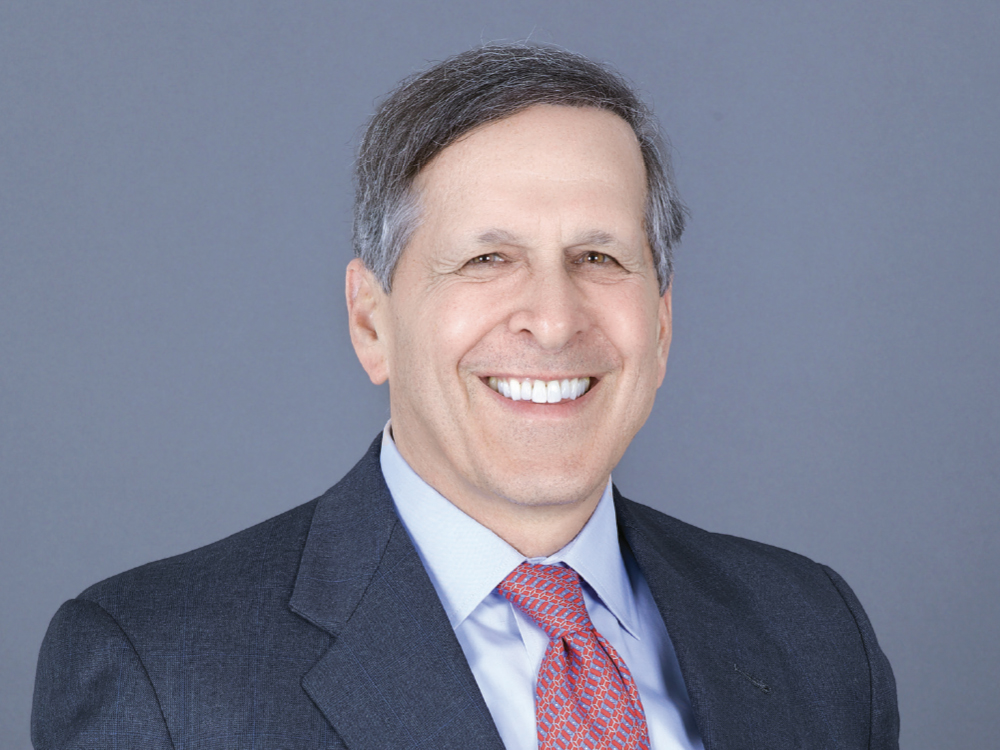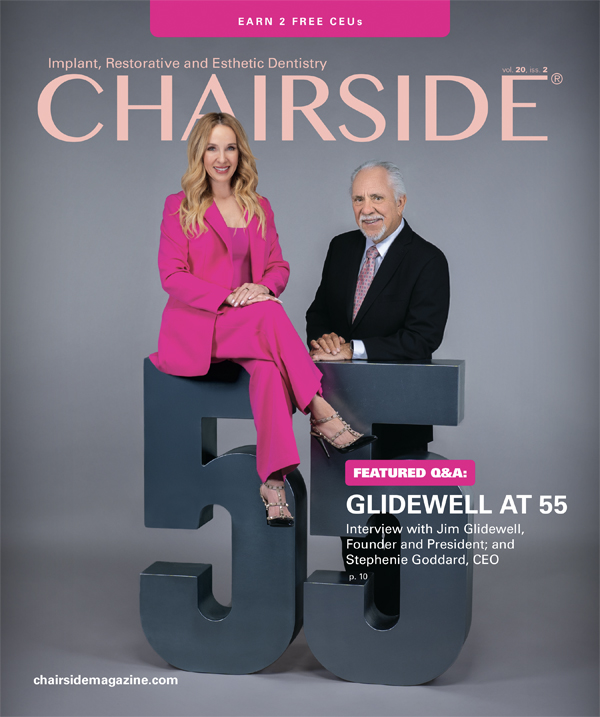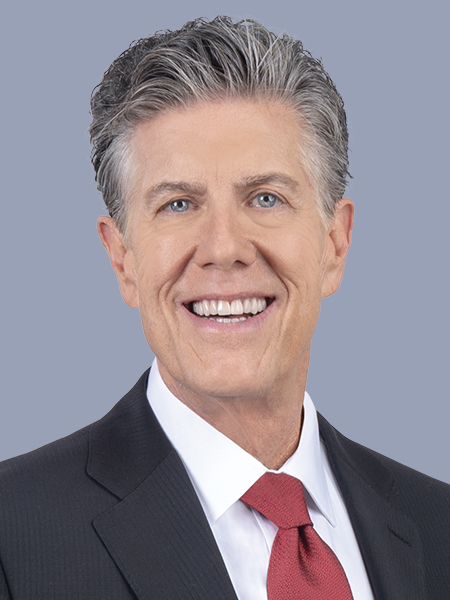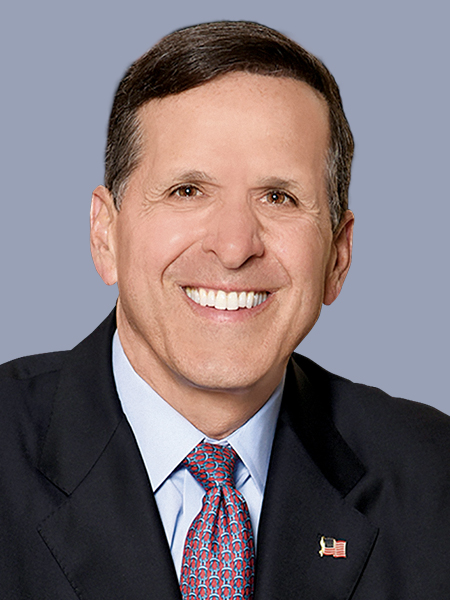Featured Q&A: Relying on Experts: Dr. Roger Levin on Building a Thriving Dental Practice

A third-generation dentist and founder and president of Levin Group, Dr. Roger Levin is one of the foremost experts in dental practice management and practice growth. He was recently interviewed by Chairside® magazine Editor-in-Chief, Dr. Neil Park.
DR. NEIL PARK: Your career path and the company you started are unique. Take us through your story.
DR. ROGER LEVIN: I graduated from the University of Maryland and joined my father in his practice in 1982. He was in practice with my grandfather, who retired in 1979 due to a heart attack. Like him, even today, I still love dentistry. It’s a great profession. We help people and you can have a great lifestyle. But my career path took a slightly different turn.
NP: What caused your change of direction?
RL: In 1982, there were rumors that dentistry was finished as a private practice profession. Medicine was moving toward managed care, and many felt that dentistry was going in that direction. I really didn’t want to work for a corporation — the mindset was very different back then. I decided to study business and build the best practice that I could to protect my future. I fell in love with the business side of dentistry. Through a series of accidents, I ended up giving a lecture. Then Dental Economics magazine asked me to write an article, and then they asked for another one, and then I got invited for another lecture.
NP: Today, there are many dental consulting firms, but in the early 80s, that was not the case.
RL: No. Jim Pride, of Pride Institute, became a good friend and mentor. He had such a big firm that I don’t think he felt very threatened. In 1985, I launched Levin Group as a consulting firm. I stayed in practice until 1992. At that point, the consulting firm was doing very well, so I went ahead and decided to go full-time. And that worked out. I’ve had a lot of luck, but I started early and built the firm gradually over time.
NP: When you first started, who were your clients?
RL: Very desperate people. The first call I got was from two partners who had their entire pension stolen by their CPA. One was in his 40s, the other in his 50s. They were brothers, and they were panicked. They asked if I would consult. I told them, “I’m writing and speaking, and I have ideas, but I haven’t done consulting.” They said, “We need you.” We were able to really grow their practice. They referred me to another practice, and that practice referred me to an oral surgeon. Next thing I know, the calls started coming almost without any marketing, besides my speaking and writing engagements. That led to my 41-year concept of marketing for our company, which is to provide education.
NP: Well, certainly in the years that I’ve worked with you, I admire how generous you are, giving your time and expertise to help our profession. How is it different for young dentists coming into the field now versus when you and I started about 40 years ago?
RL: I think the biggest change in dentistry is that you can’t graduate from dental school today and be an automatic success. You have to understand how to build the business side of the practice. I feel that’s just as important as the clinical side because every dentist deserves success. But there are student loans. You and I did not see anything like what we see today. You have the cost of opening, buying, or buying into a practice. Some dentists choose to work as employees in corporate dentistry.
But the biggest changes are student loans, dental insurance and reimbursement. In our most recent survey, we show that 60% of dentists in the country had at least one of their plans reduce reimbursements in the last 12 months. I believe the cost of dentistry, including overhead and staffing, has caused a crisis.
NP: When we started out, pretty much anybody with a dental license who could somewhat relate to people would be successful in practice. It’s not the same today. You’ve got to constantly work on your clinical skills, and you’ve got to be a good businessperson.
RL: I’ve heard this comment thousands of times: “They didn’t teach me anything about business in dental school.” I don’t like to be contrarian, but I also like to be straightforward and honest. I don’t think we wanted to learn business in dental school. I’ve often said you could bring in Harvard business faculty and it still wouldn’t make a difference. Clearly, the fastest way to learn is to get an expert. On average, we have a 36- to 40-year career. You don’t want to spend 10 of them figuring it out. We’re getting calls today from dentists who are not doing well. They don’t know what to do. They’re in a catch-22 situation because they also don’t want to invest in what they need to do. We have a larger supply of dentists and services available. DSOs have created a whole new landscape. I think it’s harder to have a successful practice today, but if you master the business side, you can be very successful and still have a great career.
NP: You and I have talked about putting together a council of expert advisors. You talked about a dental consultant that can help with practice management. What other experts do you need on your side?
RL: Let’s start with the 15–20-minute business advisory panel that has offered guidance nearly every Friday for the past five years during the Glidewell Online Study Club. It’s a great blueprint. You have a very good attorney. You have an excellent CPA. Levin Group is proud to be a part of it as well. These people have their finger on the pulse of everything that is going on. You have to surround yourself with a well-rounded core group of experts. You want to run a great business? You need a good financial advisor and a good CPA at the same time. Not all CPAs are good investment advisors. Be careful there. A lot of CPAs are terrific, but they look backwards. They tell you what you’ve done, not where you need to be going. And then the last piece, and not many dentists do this, is executive coaching. There’s very little of it in dentistry. Having an executive business coach to help you establish a vision, a mission and a culture is very important.
NP: Let’s talk about some of the problems that private practitioners face.
RL: Let me begin by telling you how to avoid problems. There are a few key elements a dentist can put into place to ensure they have a great practice. The first element is systems. As dentists, we’re not managers. A real manager sits around all day managing. We are dentists who need to be treating patients. When we put out fires, we’re doing it between patients. We’re doing it at five o’clock. We’re doing it on Saturday morning. We don’t have time to coach and mentor and counsel all day long. The best businesses work with step-by-step systems. You need excellent systems for every operation in the practice, from the new patient phone call, to patient cancellation policies, to case presentations, and hygiene productivity. All of these are systems.
The second element is building a great culture. If you build a positive, supportive culture within your office, that will go a long way to building a great team.
The last element is understanding your purpose. Why does this team come to work? Why do you come to work? What does the team need in order to understand why we come to work every day? I think more and more people today want a purpose. If you pay attention to these three things, you’ll advance your practice tremendously.
NP: Thanks, that’s a great summary of the key elements for practice success. Now, what are the problems today?
RL: Number one for the last five years has been overhead. That is the number one challenge, and dentists often know their overhead number exactly. They don’t know their income until their CPA tells them in December. They know their production. They don’t know how many patients they have. They don’t know how many open appointments they have, but they know their overhead. Overhead has risen quite a bit. 2022 saw the single largest annual rise in overhead in my 41 years. It went up 8%, partly from the pandemic and partly from supply chain costs.
NP: On average, what are the current levels of overhead?
RL: For a lot of practices, it went from 65% to almost 71%. The reason it didn’t go up a full 8% in every practice is if production went up, it drove down the percentage. A lot of people don’t understand that an overhead percentage is not the important number. It’s how much you are actually spending and how much income you have. Staffing costs went up about 11% to 12%, and they’re not coming back down. If you had a full-court press on overhead, you might drop it 2% or 3%. The bigger challenge is production. But we’re dentists. We have two hands. How much dentistry can we do? It’s a matter of looking at the practice and determining how many patients you can see. What procedures are you doing? What is your case acceptance rate and how can you increase it? How many new patients do you have? New patients are a critical number because a new patient has two to three times the financial value in the first 12 months compared to a current active patient. You can’t have all new patients, but you need a certain number of them. New patients are also a challenge now because we’re competing with other practices and DSOs. They have advertising, social media and marketing that you and I really didn’t see much of when we first started.
Number two is staffing. Dentists are beyond frustrated. 64% of practices are seeking at least one new staff member. We have a real shortage of staffing to the point where some practices have reduced hours, they can’t get the production done, or their operational systems aren’t being carried out the way they should be.
Number three is insurance, which is a huge frustration because they’re not raising reimbursements. In fact, they’re often lowering them. Only 11% of practices are completely fee-for-service. 89% of practices take at least one plan. And if that plan is 20% or more of revenue, it’s very unlikely you’re just going to leave it. People do, but it’s often a mistake. They leave it and a year later, they’re back — because patients may love you, but they don’t stay with you when you give up their insurance. Most businesses, when costs go up, raise fees. I encourage dentists every year to raise their fees; I’m now recommending at least 5%. The problem is if your practice is 50% insurance, that equates to a 2.5% increase. You need to be strategic about your business principles. For example, can you do more elective procedures? 71% of practices don’t record pocket depths. Yet we know periodontal disease is an epidemic. We can increase hygiene revenue by 20% because the periodontal disease is there. It’s good for the patient to have it diagnosed and treated, and it’s good for the practice on the production side.
NP: Are there some insurance programs where the fees are so low that it isn’t profitable for the dentist, or is there always a way to make it profitable?
RL: If the plan is 5% or 8% of your revenue and you want to eliminate it, I have no problem with that because I know we can increase production to cover it. Practices can grow 30–50% in about three years by changing their systems, assuming they have the right number of patients. There’s plenty of opportunity without increasing fixed costs to grow production. Let’s say a plan only covers overhead and there is no profit. If you get rid of the plan, you just lost that contribution to your overhead. You better have a way to make up the expenses because you still have to pay them.
NP: You need a very clear plan to replace that production with higher-profit production.
RL: As dentists, we look at the macro level and don’t always know the precise costs of every component like manufacturers do. It’s not all bad. A dentist can say, “I did a million dollars and I took home $250,000. I’m happy.” That’s not a bad way to go. The difference is with the challenges today and staffing costs. You need to know, at minimum, what are the expenses that you have? How much does your staff cost? How much do your materials cost? How much does your lab cost? One of the things I love about Glidewell is its excellent quality. You’re not inexpensive, but you’re not over the top. It’s a great opportunity to get great laboratory work at a fair price. This is one reason why I love your lab, and I love what Jim Glidewell is doing.
NP: Another thing that Jim Glidewell believes in is having a total fee, so you’re not getting nickeled and dimed with little itemized charges. When you pay for a partial denture, that’s the whole partial denture.
RL: I can tell you that dentists hate being nickeled and dimed. They hate hourly charges. They complain about their CPAs being hourly. They complain about their attorneys being hourly. I’ve had so many conversations where I say, “Okay, it’s hourly, but it’s still worth it.”
NP: You mentioned recommending that they increase fees every year. What about rebalancing fees? I would imagine since we don’t perform accurate cost accounting, that sometimes fees don’t represent the cost of delivering the service.
RL: When we raise fees, they are typically raised across the board. It’ll be 5% everywhere. There is no problem raising your fees as long as you have great customer service. The biggest problem in raising fees is when customer service isn’t good and you’re charging more for it. Most patients don’t leave you because of your fees. They leave you because of the service.
NP: Do patients ever leave because of fees? Have you heard of situations where a prophy went up $10 and the family left?
RL: Absolutely not. In fact, other than hygiene, they don’t know your fees. People don’t get crowns every six months for the most part. If the crown was $1,500 one month and $1,550 the next, nobody knows that anyway. Most people don’t want to change dentists. It’s a very personal service. If you treat them well, they’re not worried about the fees. There’s no reason for any dentist to try to build a practice on low fees. There are PPO practices that do very well, and that’s their model. But if you’re a private practice and you’re not all insurance, you’re not going to win a battle on being the lowest fee.
NP: What’s the best way for young dentists to develop as professionals?
RL: Go visit other dentists. When I went through the Pankey Institute program in the 80s, I went to visit other dentists who were Pankey dentists in Maryland. They were thrilled to have me spend a day with them and watch what they were doing. There’s so much opportunity today. You can learn a lot from webinars. As mentioned, we’ve had our Glidewell webinar for five years with some of the best speakers in the entire industry. Next are seminars. If you’re a member of the ADA or the AGD, they always bring seminars as part of what they do. They’re not free. You paid a membership, but you don’t usually pay extra to go to them. Take advantage of those. The third way is books. They’re not selling as many books today, but there are excellent textbooks out there. I encourage you to create a continuing education plan each year. Do you want implants? Do you want veneers? Do you want aligners? Then go on a deep dive. Don’t just take CE for the sake of CE. How does it improve your practice, your skills, and the ability to add new services?
NP: Let me ask you specifically about YouTube. There are literally millions of clinical videos there. Often, our young colleagues spend an enormous amount of time looking at these videos. I have some concerns because they’re uncurated, and you don’t really know if the person is an expert. What are your thoughts about using this as a source?
RL: YouTube should not be your primary source, but it can be an adjunct. You want to make sure you’re learning from experts.
NP: In implant dentistry, we have what’s called “the three-year rule,” where nearly anything you do is going to work for three years. You don’t truly know if it’s a good procedure until four or five years later. I think that’s what I’m afraid of, someone watching a Youtube video that says, “Hey, here’s a great bone-grafting hack. It’ll cut your time down.” But what happens in the future?
RL: YouTube is a bit like Facebook. You’re the only one in the world not having the perfect life. A better source would be your local specialists, who can be a great resource. Trusted platforms like the Glidewell YouTube page, which highlights procedural complications as well as successes, can be useful as well.
NP: I’m glad you brought up local specialists. In the old days, there were certain loyalties, and you had your periodontist and your endodontist and your oral surgeon, but now those bonds are a little bit more flexible. For a young general dentist, what specialist relationships should he or she be trying to build, and what can they do to build their practice?
RL: If you have a specialist who is willing to give you time, show up prepared. Have respect for people that are willing to help you. Don’t just wait until they take you to lunch. Don’t put the burden on them to reach out to you. Specialists are a phenomenal source of education, and they’re happy to meet with you because they want to have a relationship with a general dentist. It’s not just referrals to make money. They would like patients who come in with an understanding of why they’ve been referred, and the general dentist understands what happens when the patient gets sent back.
NP: Let’s talk some specifics about practice management. Of the 15–20 key performance indicators, which ones should they focus on?
RL: The single most important factor in practice success and a dentist’s financial success is production. Not profit, not overhead, not staffing costs. Production. You don’t know what your profit is month to month, but you can measure production every day. If you have enough production, you are fine. Your overhead might be high, your staff might be in chaos, but you’re still going to be fine. Here’s a quick list that can be provided to an office manager or front desk person:
Key Metrics for a Successful Practice
- Production per day
- Annual production
- Production per provider
- Production per new patient (should be two to three times the average production per patient)
- Production as a ratio of overhead
- Number of new patients
- Staff compensation
- Insurance
- Technology costs
- Hygiene production
NP: That is a great rundown, and they are all simple metrics that can be easily tracked. Let’s shift gears and talk about the future. You said previously that in the early 80s, we thought it was the end of private practice, but we’re still here over four decades later. What does the future for us hold?
RL: There is a well-known saying: “The best way to predict the future is to create it.” I joke with people that I love predicting the future because I can’t be wrong just yet. Here are my predictions for the future. When DSOs get to about 50% of the profession, and they’re probably 13% to 15% now, we’re going to see a leveling off where we’ll have 50% private practice and 50% DSOs for a while. Competition is going to get tougher. And part of running an excellent business is going to be effectively competing. How do I acquire patients? How do I keep patients? This will be critically important.
Technology will make us more efficient and faster and will eventually allow us to replace certain positions in the practice. There are things happening today that are already showing indications of that. Insurance is going to continue to keep their reimbursements as low as possible. Their mission is different than ours. They care about profit at the end of the year. Practices are going to have more dentists. Solo practice is going to continue to get smaller and smaller. It’s down to 37–47%. No one knows exactly, but the trend is dropping. You’re going to see more and more two-, three-, four-, five-, and six-doctor practices. And we’re going to see dentists opening up multiple offices. We’re seeing a lot of that now, and we’re finding some are having a lot of trouble because they don’t have a good business plan. AI is going to be huge: reading radiographs and remote monitoring for orthodontic cases, for example.
NP: Any final thoughts about the future of private practice?
RL: I’m very optimistic on the future of private practice. Most dentists who want to will still have excellent careers. The mistakes can hurt, but the most successful dentists I meet surround themselves with experts. If I were to give any young dentist advice it would be this: get experts, pay them. Get friends you don’t have to pay that you can meet with, and surround yourself with people who have your best interest at heart.
NP: Great advice. Thank you very much.






